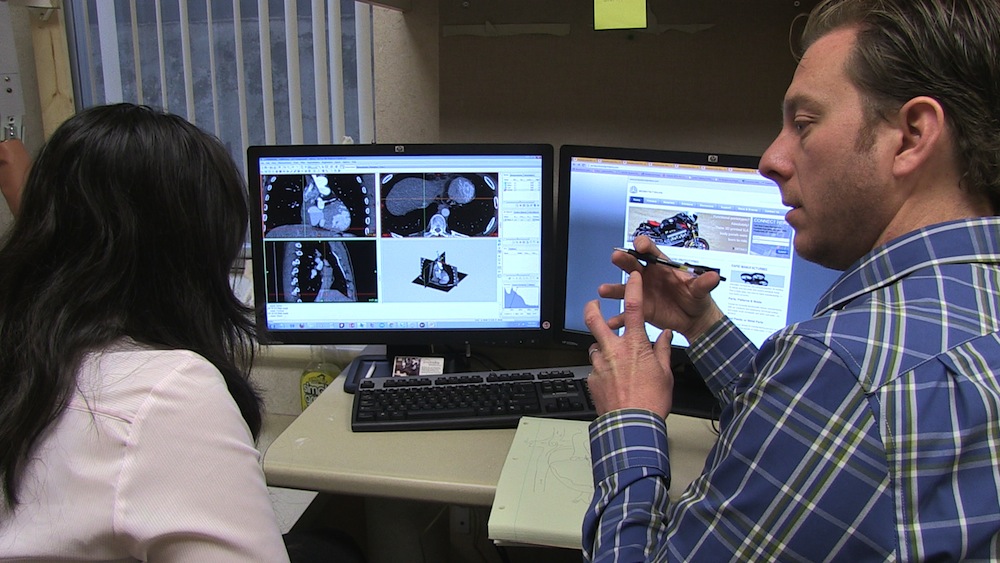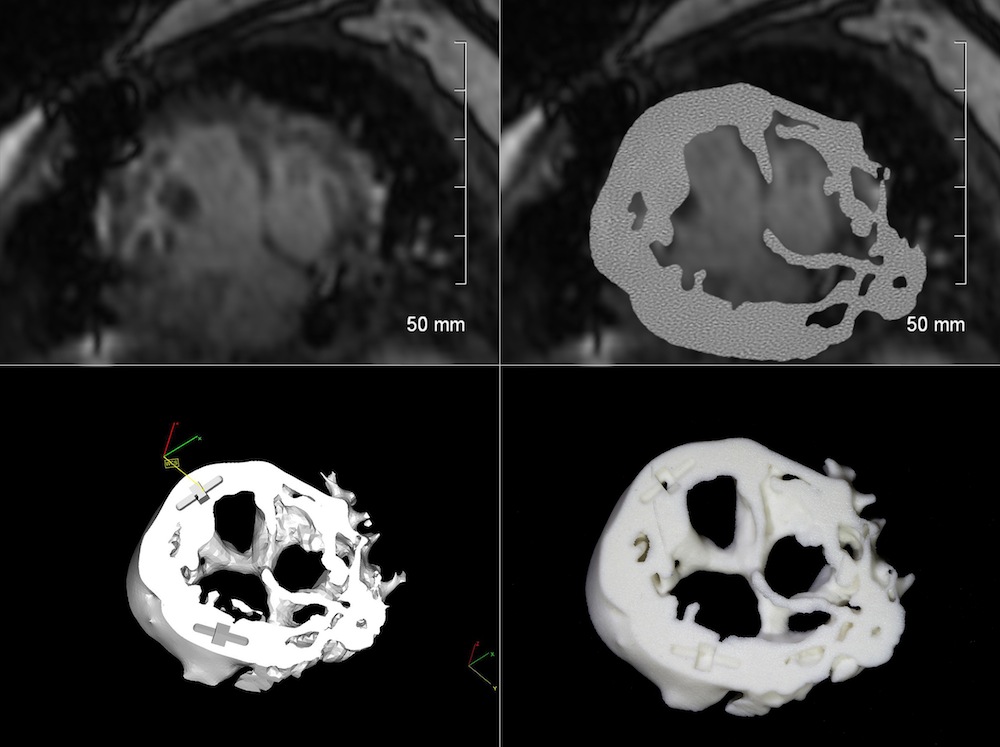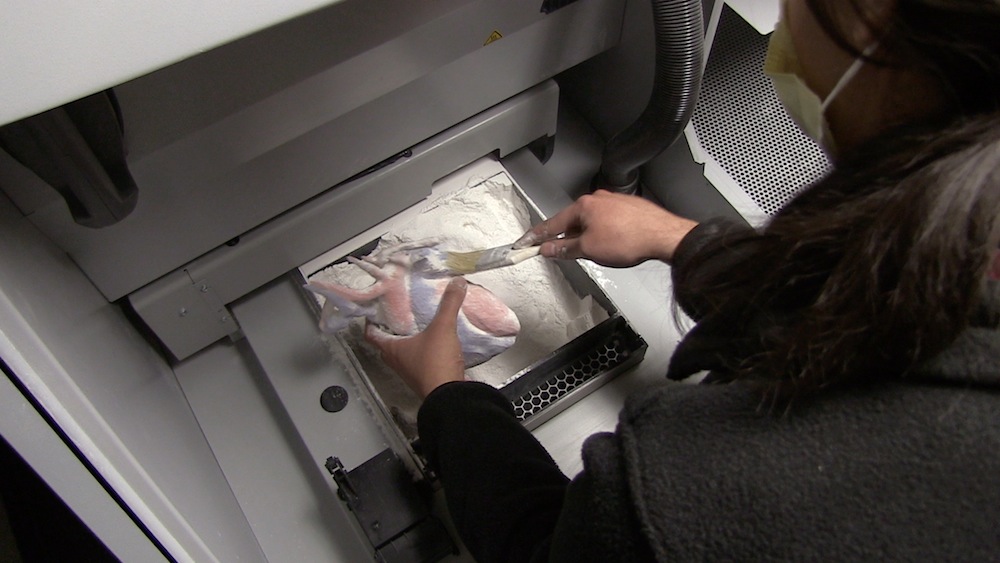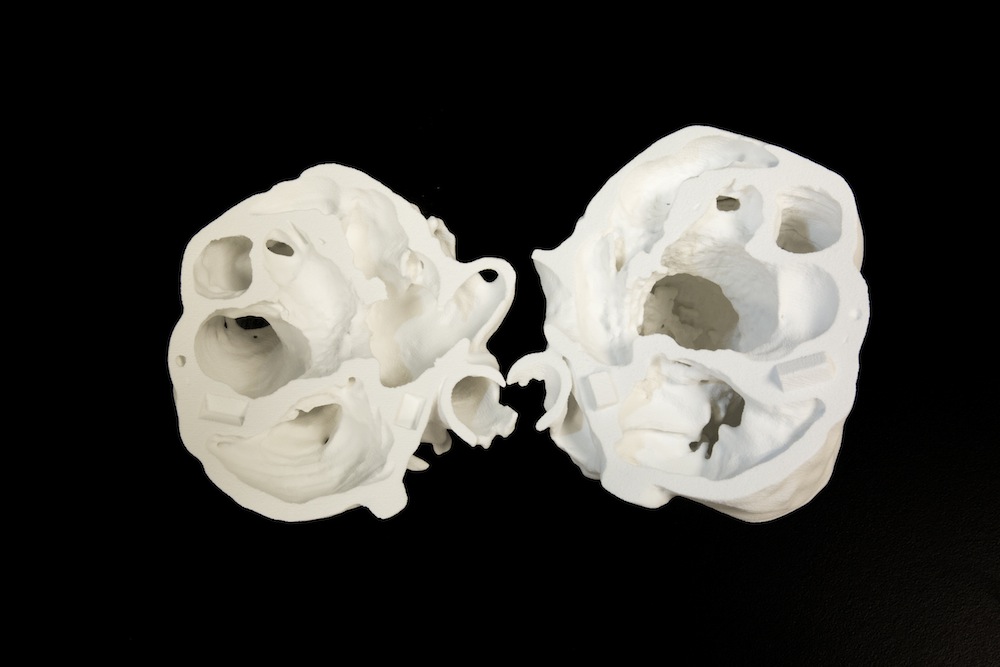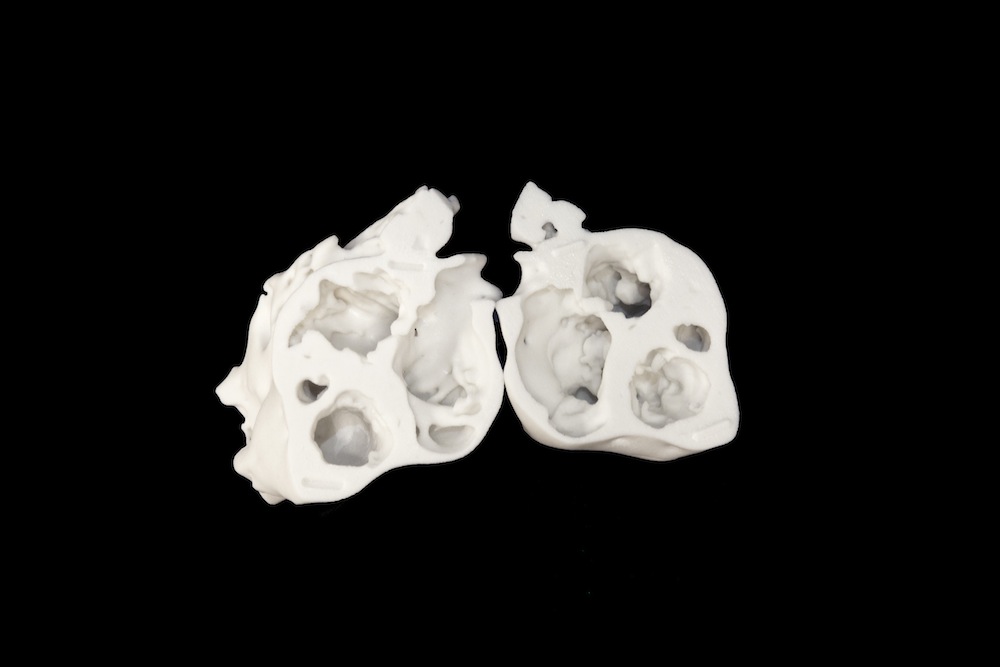3D printers have been used for myriad biomedical applications, from printing a prosthetic windpipe to creating replicas of the liver. Now, researchers are using 3D printing to create anatomically accurate replicas of the heart. The new tools could allow surgeons to better visualize heart defects in children, improving surgical outcomes. [Read the full story about the 3D printed hearts]
MRI Scans
Surgeons traditionally used detailed MRI scans to visualize heart defects prior to going into the operating room. But when Matthew Bramlet (shown here), a pediatric cardiologist at the University of Illinois College of Medicine at Peoria, discovered that a research instiution nearby had a high-quality 3D printer, he wondered whether those MRI scans could be translated into 3D replicas of the heart. (Photo credit: Kyle Formella/Jump Trading Simulation & Education Center)
Tiny hearts
Babies born with heart defects often go through a simple palliative surgery immediately, but have more complicated repair surgeries when they are 6 to 9 months old. But even when they are bigger, their hearts are still tiny and difficukt to operate on. It's also tricky to interpret their anatomy based solely on imaging, so 3D printing could in theory provide a way to improve understanding of the defects prior to surgery. (James Carlson/OSF St. Francis Medical Center)
High-end printer
The Jump Trading Simulation and Education Center acquired a very high quality 3D printer a few years ago. Bramlet contacted the center to see if they could translate his library of MRI scans into replicas of the heart. Here, biomedical researcher Sabeen Admani uses the printer. (James Carlson/OSF St. Francis Medical Center)
Get the world’s most fascinating discoveries delivered straight to your inbox.
Library of files
The dimensions and shape of the printed heart come from multiple detailed, 2D MRI scans that researchers collect prior to surgery. Those MRIs are then aggregated and used to recreate the 3D structure of the heart.
Printing hearts
The hearts can be manufactured very rapidly. Here, Admani paints a replica heart. (Photo credit: Kyle Formella/Jump Trading Simulation & Education Center)
Heart defects
Though MRIs provide exceptional details, they can sometimes miss things. Surgeons use the replicas to plan their operations, and in the very first case, the replica revealed tiny holes that were missed in conventional imaging.(Photo credit: Kyle Formella/Jump Trading Simulation & Education Center)
Immediate impact
The second printed heart was based on one from a child with complicated defects. But by visualizing the defects in 3D, the surgeon was able to plan a repair that would spare all four chambers of the heart. This alteration significantly increased the projected lifespan of the patient, Bramlet said. Here, another view of one of the heart replicas.(Photo credit: Kyle Formella/Jump Trading Simulation & Education Center)
Several cases
So far, Bramlet and his colleagues have created eight or nine of printed hearts. Each of the cases have revealed new information about the defects, and some of them have improved the outcome of the surgeries, Bramlet said. Here, Bramlet displays some of the hearts. (James Carlson/OSF St. Francis Medical Center)
Heart views
Here, another view of one of the 3D printed hearts. Before this technique can become mainstream, researchers would need to conduct clinical trials to assess its effectiveness. But because complicated heart defects are so rare, multiple medical centers would need to be involved, Bramlet said. (Photo credit: Kyle Formella/Jump Trading Simulation & Education Center)

Tia is the editor-in-chief (premium) and was formerly managing editor and senior writer for Live Science. Her work has appeared in Scientific American, Wired.com, Science News and other outlets. She holds a master's degree in bioengineering from the University of Washington, a graduate certificate in science writing from UC Santa Cruz and a bachelor's degree in mechanical engineering from the University of Texas at Austin. Tia was part of a team at the Milwaukee Journal Sentinel that published the Empty Cradles series on preterm births, which won multiple awards, including the 2012 Casey Medal for Meritorious Journalism.


